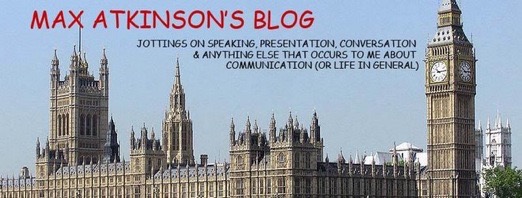If you missed the interview on BBC Radio 4, where Dr Mehrabian is to be heard bemoaning the way his statistics have been misinterpreted, it should still be available HERE (23 minutes into the tape).
He took a very similar line to that in an e-mail exchange I had with him seven years ago when I was writing the chapter ‘Physical Facts and Fiction’ for my book ‘Lend Me Your Ears’ and the relevant section went as follows:
In some cases, there is a huge gulf between the originators of the research and their disciples, both in the amount of confidence shown in such ‘facts,’ and in the extent to which they hold them to be generally applicable. This is certainly true of the 93% claim, which first reached a wider public with the publication of the book Silent messages: Implicit communication of emotions and attitudes by Dr Albert Mehrabian, a social psychologist at the University of California, in 1981. But, as he pointed out to me in an e-mail, the research on which it was based dates from more than a decade before that, and was actually concerned with feelings and attitudes:
“This work of mine has received considerable attention in the literature. It was reported originally by Mehrabian & Weiner (1967) and Mehrabian & Ferris (1967). Silent Messages contains a detailed discussion of my findings on inconsistent and consistent messages of feelings and attitudes.
Total Liking = 7% Verbal Liking + 38% Vocal Liking + 55% Facial Liking.”
(Albert Mehrabian , personal communication, e-mail, 16 October 2002).
A key point to note here is that Dr Mehrabian’s original percentages refer to different types of ‘liking’, and not to communication in all its forms. And, as one of the originators of these numbers, he writes with far more caution about their general applicability than is ever shown by the popularisers of his work:
“Please note that this and other equations regarding differential importance of verbal and nonverbal messages were derived from experiments dealing with communications of feelings and attitudes (i.e. like-dislike). Unless a communicator is talking about their feelings or attitudes, these equations are not applicable.” (Albert Mehrabian, personal communication, e-mail, 16 October 2002).
Unlike Dr Mehrabian, those who recycle these percentages with such confidence have few qualms about generalising way beyond anything he ever intended. Their cavalier disregard for the details of his research is also a matter of some concern to him, as he indicated in the reply to an e-mail in which I asked him what he thought about his findings being so widely used to mislead people about the relative importance of verbal and non-verbal communication:
“I am obviously uncomfortable about misquotes of my work. From the very beginning, I have tried to give people the correct limitations of my findings. Unfortunately, the field of self-styled ‘corporate image consultants’ or ‘leadership consultants’ has numerous practitioners with very little psychological expertise.” (Albert Mehrabian , personal communication, e-mail, 31 October 2002).
• Another body language & non-verbal communication cartoon
• Non-verbal communication
• Body language, non-verbal communication and the myth about folded arms and defensiveness
• Margaret Thatcher, body language and non-verbal communication
• Non-verbal communication and height
• Presidential heights
• Impersonators as masterful analysts of non-verbal communication
• Eye contact, public speaking and the case of President Zuma’s dark glasses
• Hair today, win tomorrow: baldness and charisma?
• Body language and non-verbal communication video












